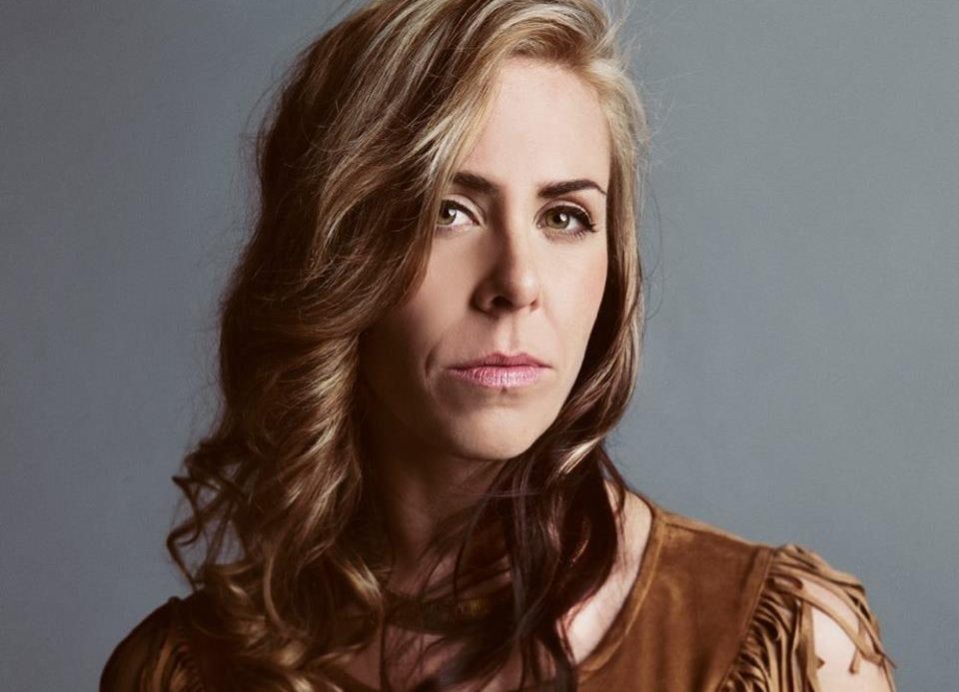Amanda Rheaume discusses her new album Holding Patterns

There’s a good reason why Amanda Rheaume has become one of Ottawa’s most revered and respected musicians. If you’ve had the chance to listen to her music, you would know that her talent and songwriting abilities speak for themselves. Rheaume’s awards include winning a cash prize in Live 88.5 Big Money Shot, receiving a Canadian Folk Music Award for Aboriginal Songwriter of the Year and a Juno Award nomination for Aboriginal Album of the Year, both in 2014 for Keep a Fire. She has also been shortlisted for the Council for the Arts in Ottawa’s RBC Emerging Artist Award.
Even more important than these accolades is her involvement and dedication to the community. She was the co-organizer for Babes4Breasts concerts and recording projects, and a major part of Ottawa’s Bluebird North songwriter showcases. She has performed for Canadian troops in Afghanistan three times and raised money for the families of military personnel. On top of that, she sold 6500 copies of a Christmas EP in Ottawa alone to raise money for Boys and Girls Clubs of Ottawa.
I spoke with Amanda recently to discuss her new album Holding Patterns, the follow-up to 2013’s Keep a Fire. Rheaume has always told stories, and being métis herself, she dug deep and touched on stories of her ancestry. On Holding Patterns, she takes a different approach to her storytelling and enlisted the help of some major players in Canadian music to help bring it all together. Not only that, but the first single “Red Dress” is being sold in benefit for the Native Women’s Association of Canada’s Safety and Violence Prevention Program, getting help from 2014 Juno Humanitarian Award winner Chantal Kreviazuk about the role of intergenerational trauma and oppression in the crisis of missing and murdered Indigenous women.
Amanda Rheaume plays the NAC’s 4th Stage on May 5th, which recently sold out. Check out the video for “Red Dress” and read the interview below.
Interview with Amanda Rheaume
Your music has always had powerful stories and messages woven into them. What is it that you wanted to convey to your audience on the record?
It’s funny because that didn’t show up as obvious as the last record, which was very much a story-based album and I planned it that way. I didn’t really know what I was going to do with this one. I toyed with the idea of making it a story-based album, but I felt like I was pushing the idea too hard. I felt like I needed to write songs that were raw, honest and true, and about what I was feeling at the time.
In retrospect, vulnerability and honesty were big parts of Holding Patterns is a recognition of the things I’ve been doing in my life and the patterns I’ve been repeating. I was recognizing all these things I was participating in and all the energy I was putting out that wasn’t necessarily helping me. This album was about believing you can change whatever is going on in your life and that there are different possibilities.
Was it challenging to pull together all those life experiences together on one album?
Yeah it was. When I wrote songs when I was fifteen years old they were very honest and vulnerable, and not that Keep a Fire wasn’t like that, but it was more story-based. It was less focused on me and my feelings and more on these nice sentiments and memories that a lot of people can relate to because we all come from somewhere. But making an album with heartbreak songs and songs that expose my fears and weaknesses, that was a different direction. That was the challenge, not just writing the songs, but saying to myself “Okay, here we go.”
What were the advantages of working with other accomplished musicians like Chantal Kreviazuk or Jim Bryson when recording the new album?
First off – It was incredible to work with Chantal on “Red Dress.” Chantal is such an inspiring artist, vocalist, humanitarian and colleague and collaborating with her on such an important song was a highlight for me and was really affirming. It was one of those moments where you say “I’m on the right path,” and it gives you fuel to keep doing what you’re doing. Raising more awareness to MMIWG and money for the Native Women’s Association is really important and I hope this song will contribute to the movement that’s already happening.
I loved working with Jim as a producer. He also co-wrote a few songs on the album. He really helped me as trust myself as an artist. He made me realize that I needed to not try so hard and just focus on being me. Sometimes I worried about it not working out, and it always came back to trusting the music and the songs and just follow that. He’s unapologetic in his artistry, and I don’t mean that in a bad way. He just does what he does, and is so good. I really became inspired by that.
The video for “Red Dress” contains some powerful imagery and you’ve mentioned it’s concept being derived from the ReDress Project. Can you elaborate a bit on the project and how this idea came together?
Jamie Black is a female artist out of Winnipeg, and she started the ReDress project a while back. She did this thing where she asked for donations of red dresses and hung them in public spaces as installations to raise awareness about missing and murdered indigenous women and girls in Canada. The imagery of an empty red dress hanging is a reminder of how major the problem is, not only because of the missing and murdered women themselves, but also why this is happening. Why is it that indigenous women are more likely to be murdered or go missing? That’s messed up.
I attended a rally for the Cindy Gladue case which is a famous case in Canada, and it’s horrific. I was moved by that case specifically and I wanted to write a song about the women who weren’t only going missing or being murdered, but also discriminated against after the fact. I was inspired by Jamie’s project and the imagery because women normally put on dresses to go out and have a good time. To me it represented hope for the future, and that project was a huge inspiration for the Red Dress video.
Given the new political climate federally, are you hopeful that this will mean a change in how the government handles the issue of Missing and Murdered Indigenous Women?
I’m hopeful for sure, but I think it’s a big task that is really complicated. It’s not just one thing, and it can’t just be fixed right away. There are a lot of factors, and it is going to take a lot of time working through a lot of fine details. Not necessarily just on a legislative level either, we’re talking about a human level too – working on the ground with people and communities. But I do feel hopeful, and acknowledgement is the first step in healing. I couldn’t feel better about the the direction we’re going in with respect to awareness.
What role do you think music plays with respect to enhancing cultural understanding and confronting issues like racism or missing and murdered indigenous women?
I think that music is a voice that is important for moving people. Look at people like Bob Dylan, Buffy St. Marie, and people like them – their careers weren’t all about singing nice melodies. It’s so powerful, especially with the availability of internet access and information today. To have the general population become aware of the real issues and be moved by the music and the message is one of the most important things.
I think humans are humans, and it’s hard not to feel something when hearing these horror stories. I mean if you grow up in a nice home in Barrhaven like I did, these issues that some people in Canada have to deal with didn’t come into my reality for a while. Things like no running water, electricity, or housing, those are not problems that many of us have to deal with growing up. So when you grown up not knowing about these issues, you might think that it’s not a real problem in our country and that it is only something that third world countries endure. As artists we have a responsibility to enhance awareness on these issues.
There was a really great quote from Louis Riel – “My people will sleep for 100 years, but when they wake it will be the artists who give them their spirit back.” That is a testament to how important it is that artists keep on getting their message out, the message of the people.
